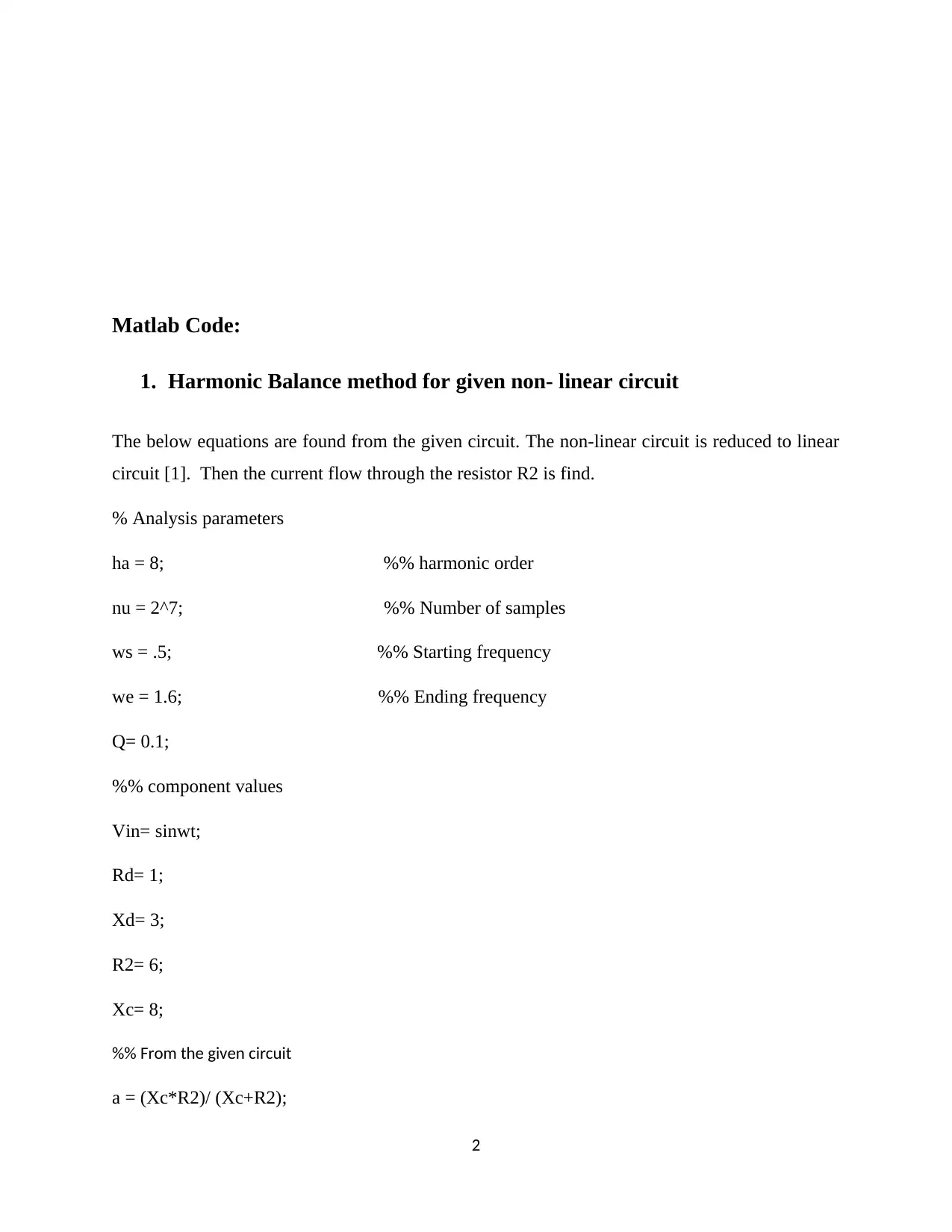ECE6124 Assignment: Harmonic Balance and Multiple Scales Analysis
VerifiedAdded on 2023/05/29
|6
|914
|389
Homework Assignment
AI Summary
This assignment solution covers the application of the Harmonic Balance method to determine the current through a resistor in a non-linear circuit, along with the implementation of scaling techniques. The Harmonic Balance method involves reducing the non-linear circuit to a linear one and solving for the current using Matlab code, including parameter definitions and frequency determination. Additionally, the solution addresses the simplification and analysis of an equation using the method of multiple scales, again implemented in Matlab to generate a graphical representation of the solution. References to relevant literature on numerical methods in electromagnetics and multiple scale methods are also provided. Desklib provides solved assignments and past papers for students.
1 out of 6








![[object Object]](/_next/static/media/star-bottom.7253800d.svg)